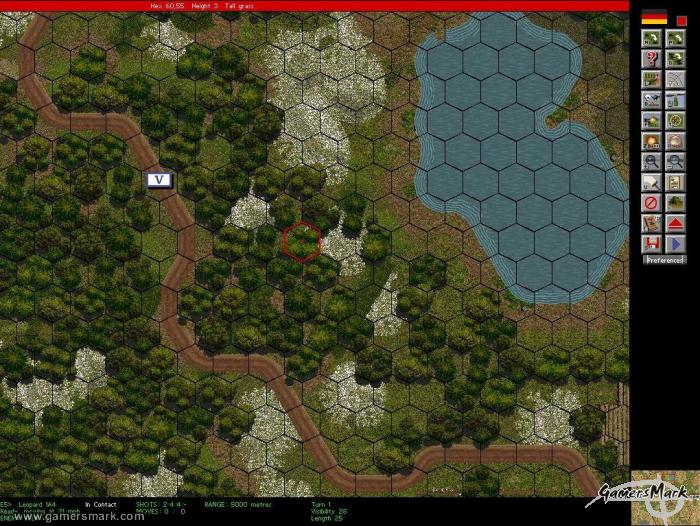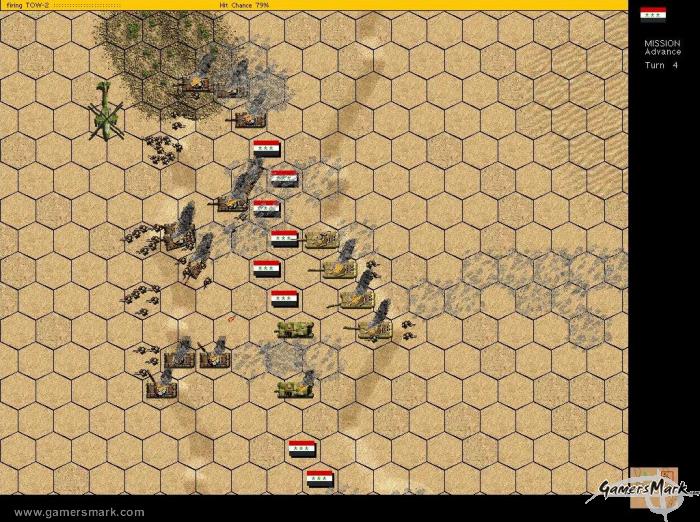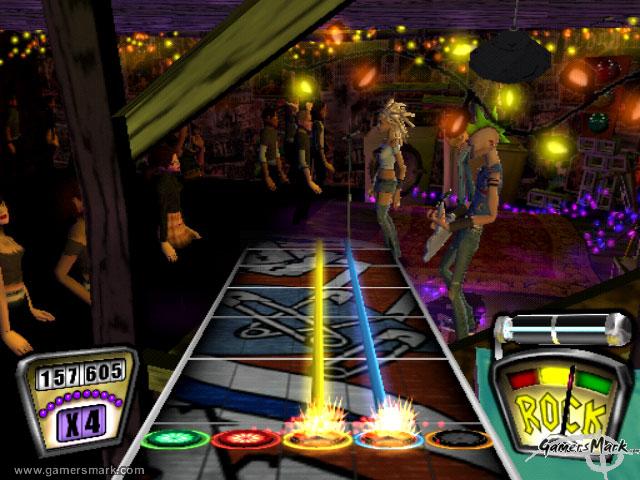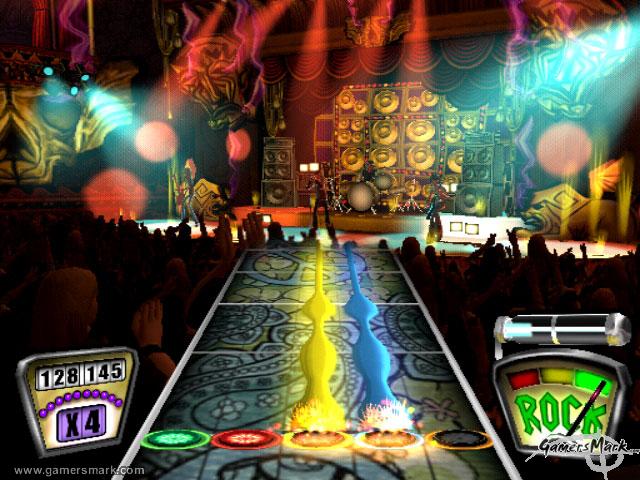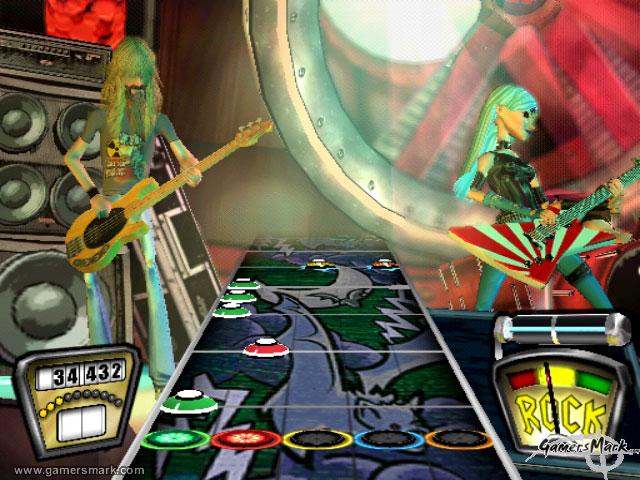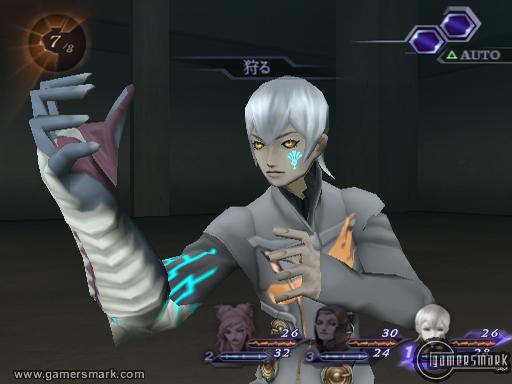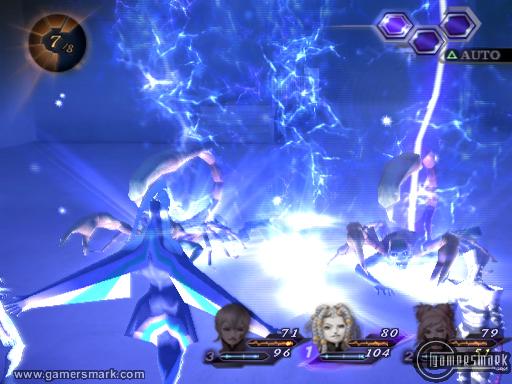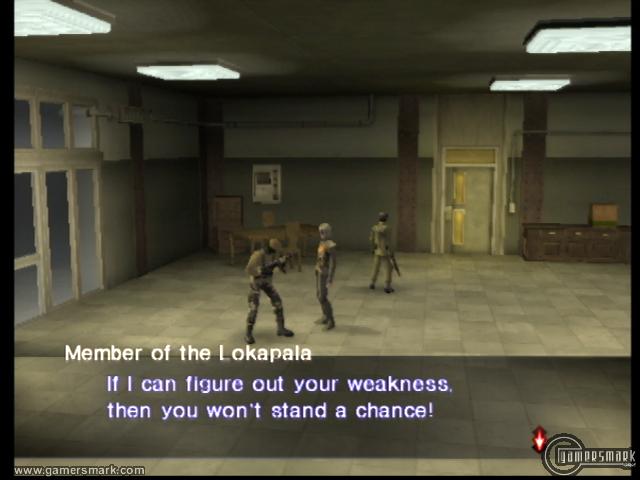Developer/Publisher: Atlus || Overall: 8.9/10
Shin Megami Tensei: Digital Devil Saga 2 is the direct sequel to Atlus’ Digital Devil Saga. DDS2 marks the first time I’ve experienced the series, so I didn’t know what to expect. Since I hadn’t played the game that had set down the original storyline and introduced the characters I actually play as, the beginning hours of the game left me completely clueless as to what was going on. There is absolutely no summary of the first game – DDS2 starts right after the original ends. DDS2 is an interesting RPG, nonetheless, and with a little research online you can catch up with at least some pieces of the story you’re already supposed to know before putting the game into your Playstation 2.
As mentioned before, to truly understand what is going on in DDS2, you’ll have to have played the first game. While the bigger picture might leave you in the dark if you start with the second game, you’ll be able to follow what’s going on to some degree. There are some seemingly random concepts thrown about, like “the Junkyard,” A.I. being implanted into soldiers, “The Karma Society,” cannibalism, “Nirvana,” a black sun that turns people into stone – the list goes on. Not much can really actually be said without spoiling both games. Non-battle gameplay consists of mazes and puzzles that you have to complete to get through levels.
DDS2 takes a few pages out of the classic turn-based RPG handbook. Random battles, magic, and experience points are just a few of the concepts in the game that aren’t new. What actually makes or breaks an RPG is how it’s implemented, and DDS2 does a great job at doing so, so much that it can actually be enjoyable to play through the tons of random battles you’ll encounter. The best thing about most of the random battles is that they go by very fast, especially when going against weaker enemies. An “Auto” function can really speed up the battles you enter when you just want to have your characters all use their regular physical attacks and beat the crap out of the enemies without having to press the X button repeatedly. You have five characters to fight with, and only three at a time can be active in battle. At any time (even when a character has fallen) you can switch out one character for another. The benefit of being able to get through battles faster means you can get more leveling up in less time, and in turn, getting on with the story at hand.
When it comes to regular battles, your characters assume the form of a demon called an Atma. Each character will have a unique demon to transform into, and can “revert” to his or her human form at any time. In their human forms, the characters will use guns as their weapons. Most of the time, you’ll enter the battle in your demon form, which allows you to use all your normal skills and magic. In the event you get ambushed, you won’t “have enough time” to transform, and be left to either fight in your human form or take a turn to transform into the Atma. On an even rarer occasion, you’ll enter battles in a “berserk” mode, in which your characters “can’t control their power” and are stuck in between transformations. Berserk mode boosts the attack of your characters immensely, but greatly lowers their defense. While in Berserk mode, a class of skills called “Hunt” will work the best. The Hunt skill class itself allows you to eat your enemies and gives you a large amount of ability points cleverly called Atma Points. AP is simply used to gain new abilities; to earn these new abilities, you have to buy a “Mantra” and download it. The different types of ways you can enter battle definitely makes the game more interesting when leveling up, because you won’t keep entering battles the same way hundreds of times and can take advantage of the different situations to give a feeling of more variety in the gameplay.
Most closely in relation to how the Sphere Grid worked in Final Fantasy X, a hexagonal grid called the Mantra Grid allows you to pick which Mantra (and in turn, abilities) that you want to buy. Once you master a Mantra, you download another one and the process repeats itself. Mantra can and will be very expensive down the line. Once a Mantra on the grid is mastered, the other hexagons around the newly mastered hexagon will “unlock” and allow you to buy and download them to gain their skills. The grid will expand as you move toward the outer edges, and unlock one layer at a time. There are also “locked” hexagons on the Mantra grid that must have all the Mantra around them mastered before they can be downloaded – as long as a character has mastered any of the hexagons around the locked hexagon, it’ll count towards unlocking it basically meaning all your characters can work together at unlocking a hexagon. Having the skills displayed on a grid makes ability earning a lot more interesting; there is a visual representation of what has been earned making randomly earning abilities seem more restrictive.
A ton of abilities are available to be earned, and with five characters there’ll be a lot of effort put into acquiring all of them for everyone. However, as time goes on, each character will inevitably end up diverging into different directions and have unique abilities. As if that weren’t enough to do with your characters, combos are thrown into the mix. If two or three characters have compatibly equipped abilities, they work together to make a more advanced skill to use together. The rest of the backend battle system doesn’t involve much more than ability management. The only thing you have to worry about equipping is ammo for guns that you use in your human form (which can actually be surprisingly expensive) and rings. Rings aren’t too complicated; they just enhance certain stats and if you combine jewels in the rings’ slots they’ll boost your stats even more. The extra layers of complexity are definitely aimed towards the hardcore RPG crowd, and it’s definitely nice to feel like you’re playing a game that actually takes some skill to play.
By far the most attractive aspect of the game will be in its general presentation and graphics. The game really looks like it’s an anime, though some parts might look a little stale or unnatural, it’s really amazing how it looks for the Playstation 2. The world they create is obviously science fiction, and there are some interesting concepts shown, as per its setting. The game is very pleasing to experience from a visual standpoint. The sound effects and soundtrack are also another strong part to the game. The music is very good, and sound effects aren’t annoying. Sometimes the characters will talk when you’re entering a battle, but their voices are so low you can’t really even hear what they’re saying. What drags the overall sound’s experience down is the curious lack of actual voice acting in anywhere except for CG cutscenes. During story scenes where it seems like there should have been talking, there just aren’t any, which is unfortunate and definitely takes away from the overall experience. As for the actual voice actors, none of them are annoying, and that’s really all you can ask for in an RPG. The main character doesn’t talk, so there’s no voice actor for him; it just gets kind of annoying during cutscenes when he looks at a character with a blank expression and seems to transfer all his thoughts on the issue at hand to the other person with no sound.
Shin Megami Tensei: Digital Devil Saga 2 is definitely an RPG aimed at the niche hardcore that enjoy Japanese RPGs and have played through the first game. In effect, DDS2 really is the second half of one game, and to really get the full experience this “side story” of the Shin Megami Tensei series has to offer, both must be played in succession. Otherwise, DDS2 is a solid RPG that is fun to play regardless of whether or not you understand the story.

